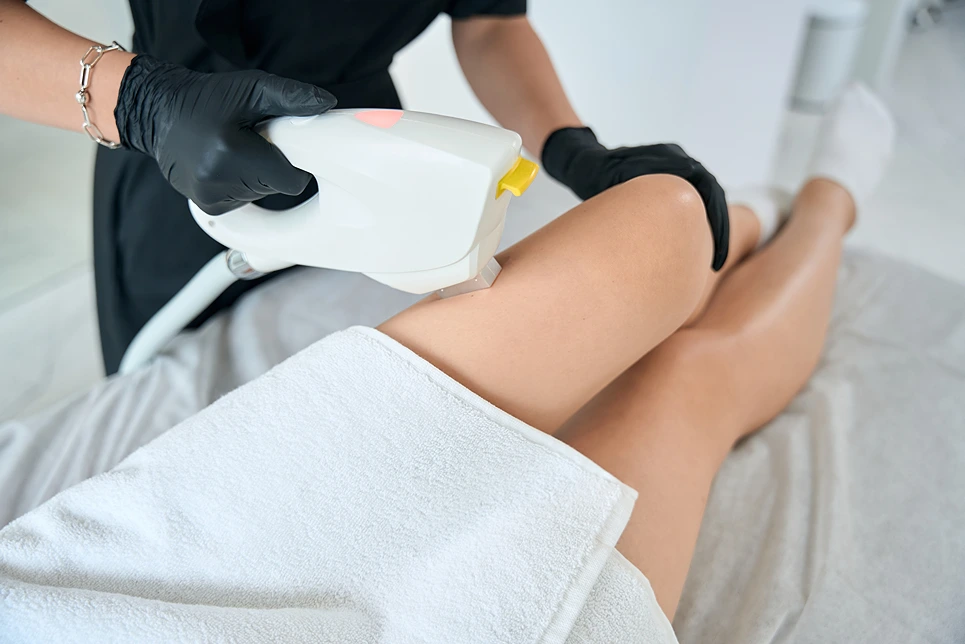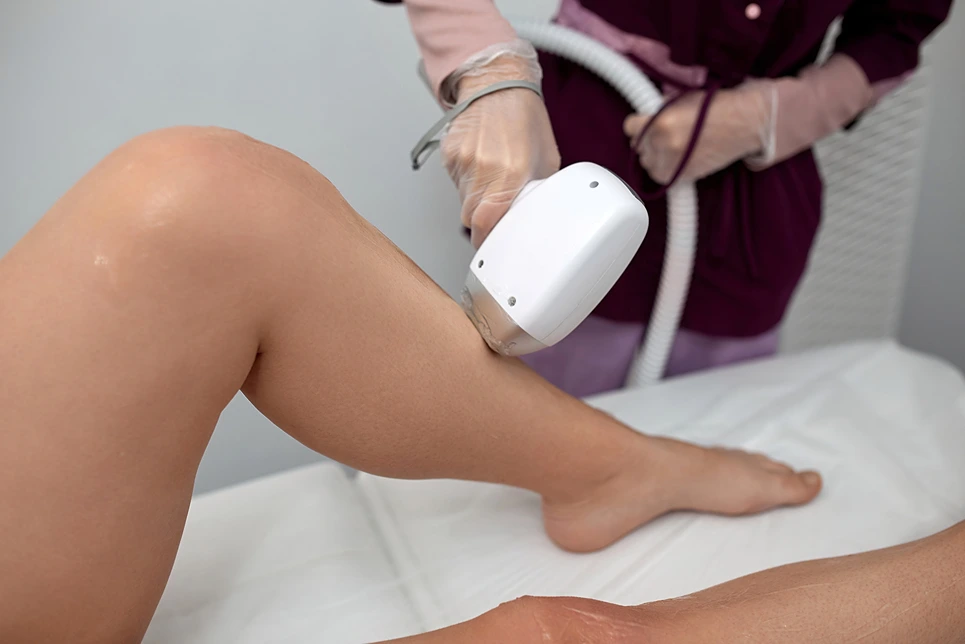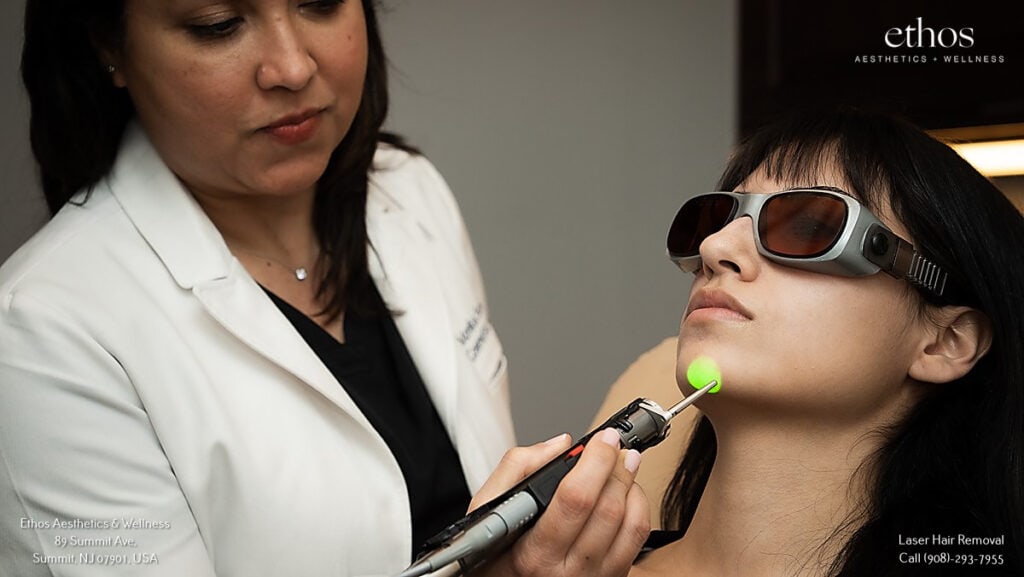Laser hair removal is widely regarded as an effective long-term solution for dealing with unwanted hair. However, it does not provide instantaneous results.
To achieve optimal outcomes from laser hair removal, it is essential to have a solid understanding of the hair growth cycle and how it impacts treatment frequency and timing.
Additionally, individual variations like skin tone, hair color, hormone levels, and area being treated can affect how often treatments are needed. With realistic expectations and a personalized treatment schedule, laser hair removal can provide smooth, hair-free skin for months at a time.
The Hair Growth Cycle: Why You Need Multiple Laser Hair Removal Sessions

Human hair follows a cyclic pattern of growth consisting of three main phases:
Anagen – The Active Growth Phase
This is when the hair follicle is actively growing new hair. Hair in this phase has high levels of melanin and is most receptive to laser treatment. The anagen phase can last anywhere from 2-6 years.
Catagen – The Transitional Phase
During this short 2-4 week phase, hair growth stops and the follicle shrinks in preparation for the resting phase.
Telogen – The Resting Phase
In this phase, the hair stops growing and eventually sheds. The follicle remains inactive for 2-4 months before starting a new anagen phase.
At any given time, only about 20% of hair follicles are in the anagen growth phase. The rest are in the catagen or telogen resting phases. Since laser hair removal only effectively disables follicles in the anagen phase, multiple treatments are required to target hairs as they enter anagen growth.
Spreading treatments over weeks or months allows new groups of hair follicles to enter the anagen phase and be disabled by the laser. Consistency is key – skipping planned sessions means some hair follicles may be left intact.
Laser Hair Removal and Hair Growth: How Timing Impacts Results
Proper timing between laser hair removal sessions is crucial for long-lasting hair reduction. Here are some key factors that influence treatment schedule and results:
Typical Treatment Intervals
- Face: 4-6 weeks
- Underarms & Bikini: 6-8 weeks
- Legs: 8-12 weeks
- Back & Chest: 8-12 weeks
These general guidelines provide a starting point, but other individual factors also play a role, as discussed next.
Individual Factors
- Skin Tone & Hair Color – The greater the contrast between skin and hair color, the fewer treatments required. Darker hair on light skin shows the best results.
- Area Being Treated – The body area impacts hair growth rate and density. Hormonally sensitive areas like the face and bikini line may need more frequent treatments than legs or arms.
- Hormonal Conditions – Health conditions involving hormones can increase hair growth rate and density, necessitating more frequent laser sessions.
- Consistency – Skipping planned treatments or long gaps between sessions leads to poorer results. Sticking closely to the recommended schedule maximizes hair removal.
Male vs. Female Laser Hair Removal Timing

In general, men may require more laser hair removal sessions than women for a few reasons:
- Thicker, Coarser Hair: Men often have thicker and coarser hair, especially on areas like the chest, back, and beard, which can take longer to disable with the laser.
- Hormonal Influences: Testosterone promotes thicker and denser hair growth in men.
- Larger Treatment Areas: Men tend to seek treatment for larger areas like the back or chest, which may require more sessions to cover completely.
Important Note: This is a general guideline. Individual differences in hair growth patterns and laser response still apply regardless of gender.
Realistic Expectations
While laser hair removal can provide long-lasting reduction in hair growth, there are some important realistic expectations to keep in mind:
Multiple Sessions Are Needed
Most individuals require 6-12 treatment sessions spaced over several months to achieve significant hair reduction. Only a small percentage of hair follicles are disabled per treatment, so multiple treatments are needed to disable all follicles over their growth cycles.
The number of treatments depends on hair color, thickness, and treatment area. More sessions are needed for thick dark hair or hormonally sensitive areas.
Maintenance May Be Required
After completing the initial series of treatments, maintenance sessions might be required periodically to disable newly growing hairs. These are usually scheduled once or twice per year.
Some follicles may recover over time and produce finer, lighter hairs. For some individuals, additional maintenance treatments are not needed if they are satisfied with their results.
Finding the Optimal Schedule for You
Because of individual differences in hair growth patterns and cycles, it is imperative to consult an experienced laser hair removal specialist to determine the optimal personalized treatment schedule.
Factors the specialist will consider include:
- Hair color and skin tone
- Density and thickness of hair in treatment areas
- Identifying hormonally sensitive regions
- Overall hair growth rate
- Lifestyle factors that affect hair growth
Proper timing of sessions boosts results while minimizing the number of treatments needed. The specialist can advise on recommended intervals between sessions and expected number of treatments based on your individual characteristics.
They will also provide guidance on maintaining results long-term. Following their prescribed schedule diligently provides the best results.
Conclusion

Laser hair removal provides a long-term solution to unwanted hair growth. But it does require multiple periodically spaced treatments to accommodate the hair growth cycle. Treatment frequency and timing varies based on individual factors.
Consulting a qualified specialist is highly recommended to determine the optimal schedule and set realistic expectations. With proper timing and consistency, laser hair removal can effectively provide smooth hair-free skin that lasts.







